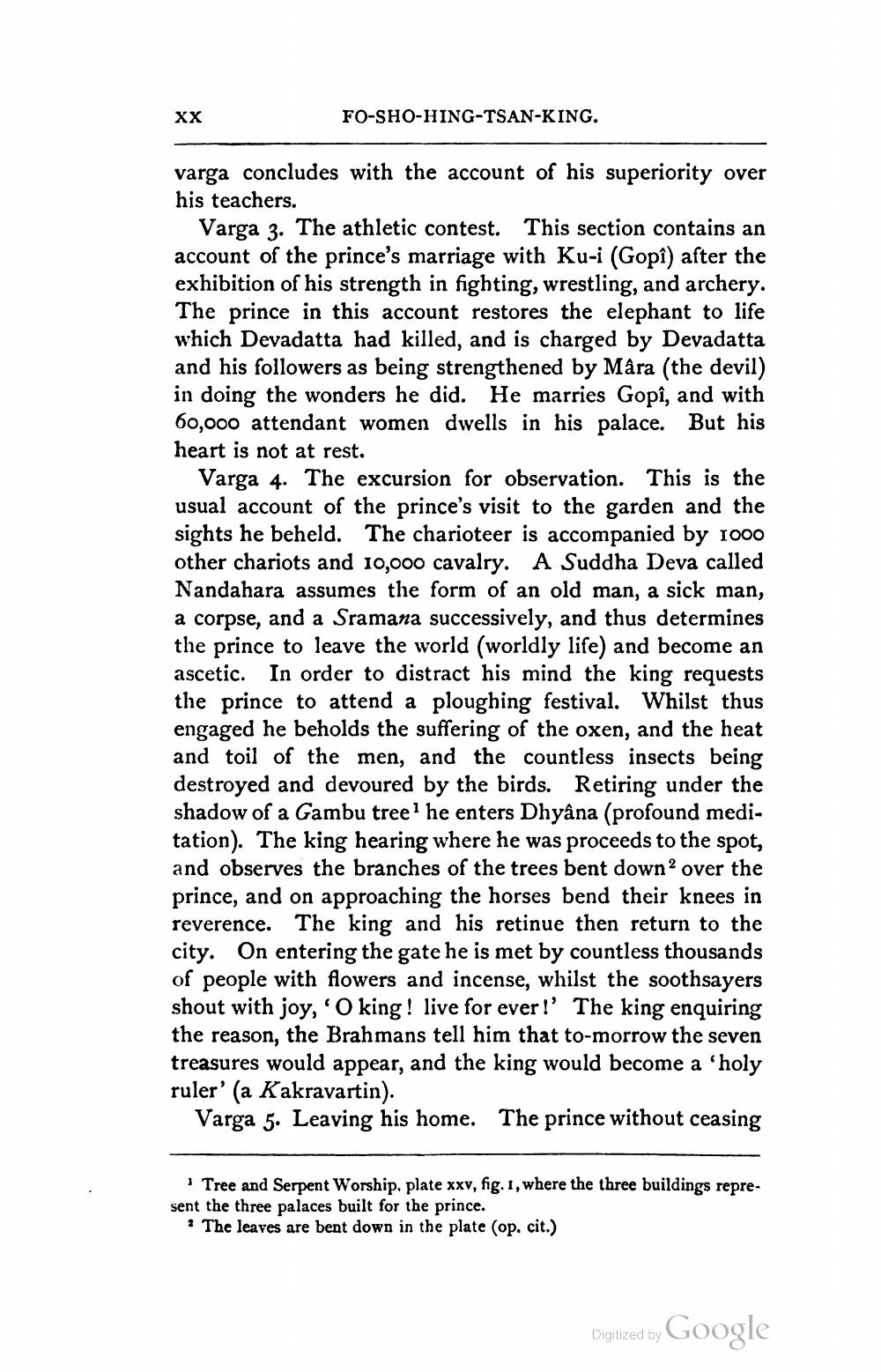________________
XX
FO-SHO-HING-TSAN-KING.
varga concludes with the account of his superiority over his teachers.
Varga 3. The athletic contest. This section contains an account of the prince's marriage with Ku-i (Gopî) after the exhibition of his strength in fighting, wrestling, and archery. The prince in this account restores the elephant to life which Devadatta had killed, and is charged by Devadatta and his followers as being strengthened by Mara (the devil) in doing the wonders he did. He marries Gopî, and with 60,000 attendant women dwells in his palace. But his heart is not at rest.
Varga 4. The excursion for observation. This is the usual account of the prince's visit to the garden and the sights he beheld. The charioteer is accompanied by 1000 other chariots and 10,000 cavalry. A Suddha Deva called Nandahara assumes the form of an old man, a sick man, a corpse, and a Sramana successively, and thus determines the prince to leave the world (worldly life) and become an ascetic. In order to distract his mind the king requests the prince to attend a ploughing festival. Whilst thus engaged he beholds the suffering of the oxen, and the heat and toil of the men, and the countless insects being destroyed and devoured by the birds. Retiring under the shadow of a Gambu treel he enters Dhyâna (profound meditation). The king hearing where he was proceeds to the spot, and observes the branches of the trees bent down over the prince, and on approaching the horses bend their knees in reverence. The king and his retinue then return to the city. On entering the gate he is met by countless thousands of people with flowers and incense, whilst the soothsayers shout with joy, 'Oking! live for ever!' The king enquiring the reason, the Brahmans tell him that to-morrow the seven treasures would appear, and the king would become a "holy ruler' (a Kakravartin).
Varga 5. Leaving his home. The prince without ceasing
Tree and Serpent Worship, plate xxv, fig. 1, where the three buildings represent the three palaces built for the prince.
? The leaves are bent down in the plate (op. cit.)
Digitized by Google




